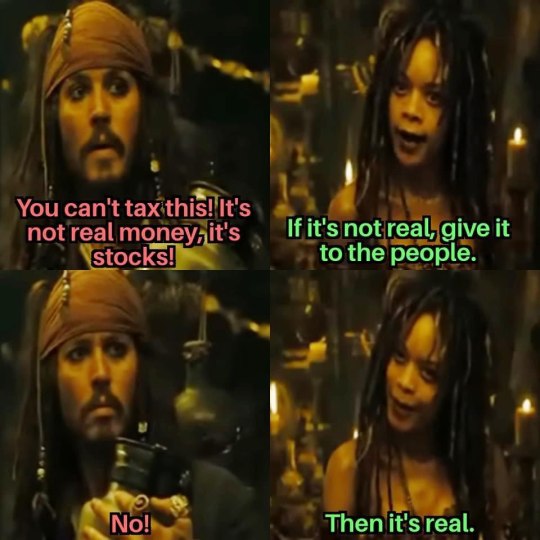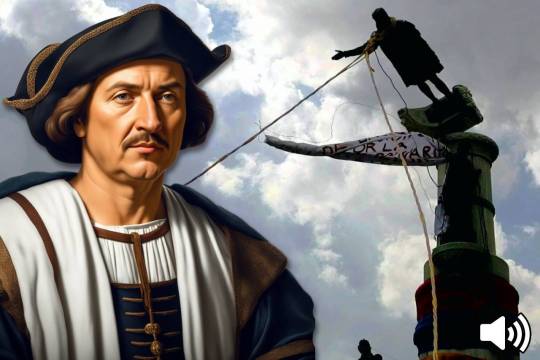#Caribbean governments
Explore tagged Tumblr posts
Photo

Galleryyuhself - What better way to sustain the valuable works of an icon than this tribute to his memory.
#Galleryyuhself/Norman Girvan#galleryyuhself/blogs of note#galleryyuhself/The Norman Girvan Blog#galleryyuhself/archives#tumblr/Norman Girvan#tumblr/Jamaican Thinker/ Theorist#tumblr/political economic development#capitalism#Caribbean governments#economy#economics#Norman Girvan#blogs#archives#history#theory#practicality#truth#knowledge#legacy
0 notes
Text

Then it’s real…
#Then it’s real…#pirates of the caribbean#pirates of the caribbean meme#memes#meme#taxes#tax#stocks#stock market#stock trading#investing stocks#stock#wall street#wall streeet journal#wall st#wall st.#stock management software#capitalism#exploitation#exploitative#ausgov#politas#auspol#tasgov#taspol#australia#fuck neoliberals#neoliberal capitalism#anthony albanese#albanese government
20 notes
·
View notes
Text
Governor Swann is actually a really good dad, peak regency Girl Dad
#pirates of the caribbean#elizabeth swann#governor swann#potc#potc 2#potc 3#governer swan#pirates of the Caribbean dead mans chest
23 notes
·
View notes
Text
[D]omesticated attack dogs [...] hunted those who defied the profitable Caribbean sugar regimes and North America’s later Cotton Kingdom, [...] enforced plantation regimens [...], and closed off fugitive landscapes with acute adaptability to the varied [...] terrains of sugar, cotton, coffee or tobacco plantations that they patrolled. [...] [I]n the Age of Revolutions the Cuban bloodhound spread across imperial boundaries to protect white power and suppress black ambitions in Haiti and Jamaica. [...] [Then] dog violence in the Caribbean spurred planters in the American South to import and breed slave dogs [...].
---
Spanish landowners often used dogs to execute indigenous labourers simply for disobedience. [...] Bartolomé de las Casas [...] documented attacks against Taino populations, telling of Spaniards who ‘hunted them with their hounds [...]. These dogs shed much human blood’. Many later abolitionists made comparisons with these brutal [Spanish] precedents to criticize canine violence against slaves on these same Caribbean islands. [...] Spanish officials in Santo Domingo were licensing packs of dogs to comb the forests for [...] fugitives [...]. Dogs in Panama, for instance, tracked, attacked, captured and publicly executed maroons. [...] In the 1650s [...] [o]ne [English] observer noted, ‘There is nothing in [Barbados] so useful as … Liam Hounds, to find out these Thieves’. The term ‘liam’ likely came from the French limier, meaning ‘bloodhound’. [...] In 1659 English planters in Jamaica ‘procured some blood-hounds, and hunted these blacks like wild-beasts’ [...]. By the mid eighteenth century, French planters in Martinique were also relying upon dogs to hunt fugitive slaves. [...] In French Saint-Domingue [Haiti] dogs were used against the maroon Macandal [...] and he was burned alive in 1758. [...]
Although slave hounds existed throughout the Caribbean, it was common knowledge that Cuba bred and trained the best attack dogs, and when insurrections began to challenge plantocratic interests across the Americas, two rival empires, Britain and France, begged Spain to sell these notorious Cuban bloodhounds to suppress black ambitions and protect shared white power. [...] [I]n the 1790s and early 1800s [...] [i]n the Age of Revolutions a new canine breed gained widespread popularity in suppressing black populations across the Caribbean and eventually North America. Slave hounds were usually descended from more typical mastiffs or bloodhounds [...].
---
Spanish and Cuban slave hunters not only bred the Cuban bloodhound, but were midwives to an era of international anti-black co-ordination as the breed’s reputation spread rapidly among enslavers during the seven decades between the beginning of the Haitian Revolution in 1791 and the conclusion of the American Civil War in 1865. [...]
Despite the legends of Spanish cruelty, British officials bought Cuban bloodhounds when unrest erupted in Jamaica in 1795 after learning that Spanish officials in Cuba had recently sent dogs to hunt runaways and the indigenous Miskitos in Central America. [...] The island’s governor, Balcarres, later wrote that ‘Soon after the maroon rebellion broke out’ he had sent representatives ‘to Cuba in order to procure a number of large dogs of the bloodhound breed which are used to hunt down runaway negroes’ [...]. In 1803, during the final independence struggle of the Haitian Revolution, Cuban breeders again sold hundreds of hounds to the French to aid their fight against the black revolutionaries. [...] In 1819 Henri Christophe, a later leader of Haiti, told Tsar Alexander that hounds were a hallmark of French cruelty. [...]
---
The most extensively documented deployment of slave hounds [...] occurred in the antebellum American South and built upon Caribbean foundations. [...] The use of dogs increased during that decade [1830s], especially with the Second Seminole War in Florida (1835–42). The first recorded sale of Cuban dogs into the United States came with this conflict, when the US military apparently purchased three such dogs for $151.72 each [...]. [F]ierce bloodhounds reputed to be from Cuba appeared in the Mississippi valley as early as 1841 [...].
The importation of these dogs changed the business of slave catching in the region, as their deployment and reputation grew rapidly throughout the 1840s and, as in Cuba, specialized dog handlers became professionalized. Newspapers advertised slave hunters who claimed to possess the ‘Finest dogs for catching negroes’ [...]. [S]lave hunting intensified [from the 1840s until the Civil War] [...]. Indeed, tactics in the American South closely mirrored those of their Cuban predecessors as local slave catchers became suppliers of biopower indispensable to slavery’s profitability. [...] [P]rice [...] was left largely to the discretion of slave hunters, who, ‘Charging by the day and mile [...] could earn what was for them a sizeable amount - ten to fifty dollars [...]'. William Craft added that the ‘business’ of slave catching was ‘openly carried on, assisted by advertisements’. [...] The Louisiana slave owner [B.B.] portrayed his own pursuits as if he were hunting wild game [...]. The relationship between trackers and slaves became intricately systematized [...]. The short-lived republic of Texas (1836–46) even enacted specific compensation and laws for slave trackers, provisions that persisted after annexation by the United States.
---
All text above by: Tyler D. Parry and Charlton W. Yingling. "Slave Hounds and Abolition in the Americas". Past & Present, Volume 246, Issue 1, February 2020, pages 69-108. Published February 2020. At: doi dot org/10.1093/pastj/gtz020. February 2020. [Bold emphasis and some paragraph breaks/contractions added by me. Presented here for commentary, teaching, criticism purposes.]
#abolition#its first of february#while already extensive doumentation of dogs in american south in 1840s to 60s#a nice aspect of this article is focuses on two things#one being significance of shared crossborder collaboartion cooperation of the major empires and states#as in imperial divisions set aside by spain britain france and us and extent to which they#collectively helped each other crush black resistance#and then two the authors also focus on agency and significance of black resistance#not really reflected in these excerpts but article goes in depth on black collaboration#in newspapers and fugitive assistance and public discourse in mexico haiti us canada#good references to transcripts and articles at the time where exslaves and abolitionists#used the brutality of dog attacks to turn public perception in their favor#another thing is article includes direct quotes from government and colonial officials casually ordering attacks#which emphasizes clearly that they knew exactly what they were doing#ecology#indigenous#multispecies#borders#imperial#colonial#tidalectics#caribbean#carceral geography#archipelagic thinking
22 notes
·
View notes
Text
Yeah they should have stopped with PotC #3 I was soo disappointed with Barbossa
#yes hes a priate but he had morals#as a pirate being sold to the england government the REAL#barbossa would never stoop to that low even#if it means getting deals#he was actually became a fav#of mines and was so so disappointed#how disney tossed him aside#like half of the others they did 😑#potc#hector barbossa#pirates of the caribbean#potc fandom
9 notes
·
View notes
Text
Question and Answer session
Dr. David V. Browne - Seed for Protest: Barbados in the 1920s and 1930s.
3 notes
·
View notes
Text
Gang violence across Haiti

View On WordPress
9 notes
·
View notes
Text

"Christopher Columbus, during his voyages in the late 15th century, never actually set foot on what is now considered the mainland of North America. He did not “discover America” and he never met or came across an Native American Indian…"
ORIGINAL CONTENT: https://www.undergroundusa.com/p/time-to-set-the-record-straight-on
READ, SUBSCRIBE, SHARE & EDUCATE: PROTECT FREE SPEECH
#Columbus#ChristopherColumbus#ColumbusDay#NewWorld#Exploration#AtlanticOcean#Caribbean#America#History#Government#Biden#Harris#Marxism#Election2024#Election#Disinformation#Media#MAGA#GOP#Podcast#Constitution#USA#Woke#Democrats#Politics#News#Truth
3 notes
·
View notes
Text
In light of my live-blogging #1088 comment on the One Piece and (the meaning of) freedom.
I don't know if this constitutes proof.
BUT - the amount of One Piece x Pirates of the Caribbean music-mashes out there surely means something?!
And.
They.
All.
Slap.
#WHYS THE MEAT/RUM GONE??#pirates#value only one thing#and it isn't actually treasure#or perhaps it is the greatest treasure of all#freedom#Jack would also say fuck the World Government ngl#one piece anime#one piece#one piece speculation#one piece thoughts#one piece theory#pirates of the caribbean#op#opla#potc#buggy thoughts#episode 1088#one piece 1088
14 notes
·
View notes
Text
Mia Mottley | TIME100
youtube
5 notes
·
View notes
Photo

Capitolio.
www.juliomaciasphotography.com | instagram | shop
11.26.22 Havana, Cuba
#photography#nikon#architecture#building#government#capitol#capitol building#capitolio de la habana#travel#tourism#voyage#journey#wanderlust#wander more#wonder more#havana#cuba#caribbean#latin america
26 notes
·
View notes
Text
#Martinique: Clashes have erupted on the French Caribbean island of Martinique after protests against a rising cost of living continue. Gunfire has been reported during clashes, with at least 11 police officers and three civilians wounded as a result. The government of Martinique has set bans on demonstrations in parts of the island, but the orders have been ignored thus far.
#Martinique#french#caribbean islands#caribbean#videos#video#class war#protests#antiauthoritarian#antinazi#we are all antifascists#anti capitalism#antifascist#anti imperialism#anti colonialism#anti cop#anti colonization#eat the rich#eat the fucking rich#antifaschistische aktion#ausgov#politas#auspol#tasgov#taspol#australia#fuck neoliberals#neoliberal capitalism#anthony albanese#albanese government
10 notes
·
View notes
Text

The Government Fish sculpture is a highlight of Scharloo Abou, a neighbourhood of Willemstad, Curaçao, known for its street art.
2 notes
·
View notes
Text
You have all heard the tales of pirates in the seven seas ,but the most famous ones do come from the Caribbean Sea. Never mind the Hollywood versions ,they are just infantile creatures who have no clue as to what real pirates were like. You need to remember that Hollywood is nothing but a brainwashing machine run by the government and now even the Pentagon, they run practically the show and approve or disapprove the flicks that we get to see every year .Having said that it is all just a big mind controlling operation.But getting back to this Black Pearl looking galleon flying the skull and bones black flag which is indeed today a secret society in the dearest US government where many US presidents have been and are members .Which proves that Pirates are very much alive and kicking! Well,folks pirates have been around for millennia under different flags and countries like the British Empire long ago ,the Spanish Empire faithful to the Queen and King ,long ago.The Chinese as well,active today ransacking other countries ocean fauna. And what about the infamous Somalian pirates a new version ,a terrorist one indeed . But think for a moment pirates of my generation Incrusted in the psyche of our childhood like shipworm in the tale of Peter Pan .Haaa! And what about the great Blackbeard? Well , Pirates have always been a pain in stern to most empires,ha. Well, enough for now .Words by Sergio GuymanProust.

#pirates and their obscure lives#words by sergio guymanproust#credit to the blogger&photographer.#well never mind Hollywood and their pirates#brainwashing#only the pentagon and the government care about themselves not we the people.#pirates still roam the 7 seas#regardless of your beliefs#Pirates have always been children’s nightmares#the Caribbean sea#read and enjoy#read and share
4K notes
·
View notes
Text
youtube
#youtube#militarytraining#Antony Blinken#security assistance#political unrest#crisis management#Secretary of State#Haiti security#humanitarian aid#international relations#US intervention#global security#Haiti#Haiti crisis#diplomacy#United Nations#Haiti government#foreign affairs#US foreign policy#gang violence#Caribbean#2024 news#international cooperation#Caribbean politics#security meeting#New York City#geopolitical issues#political news#government meeting#2024 events
0 notes
Link
#Federal Government#Barbara Lee#Caribbean#Caribbean Caucus#Dickon Mitchell#Grenada#Hurricane Beryl#Jamaica#National Oceanic and Atmospheric Administration#Puerto Rico#Saint Vincent and the Grenadines#Stacey Plaskett#United States Agency for International Development#United States Virgin Islands
0 notes